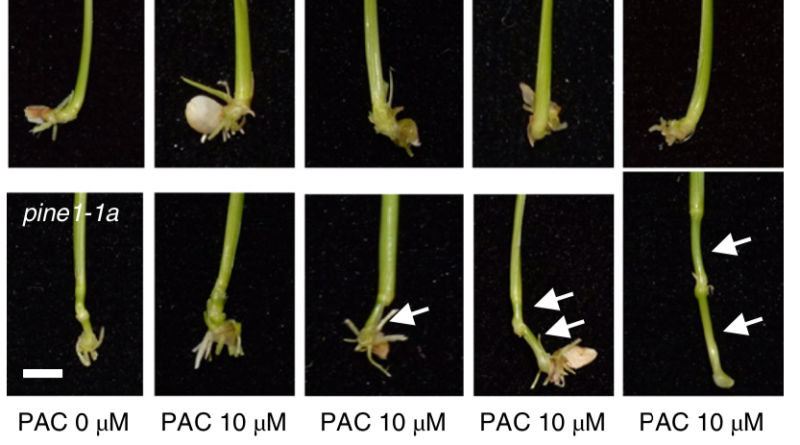PINE1 IS A NEW RICE GENE THAT COORDINATES FLOWERING WITH INTERNODE ELONGATION
Rice is the first staple food for humans worldwide and Italy is the main rice producer in Europe. Knowing the genetic factors and the molecular mechanisms that control important rice agronomic traits can improve crop yield. One of the factors that most influence the yield is flowering time and panicle formation. In this article, we characterize from the genetic, physiological and molecular point of view a new gene, which we named PINE1, which coordinates flowering, that encompasses panicle formation, with heading at maturation. We show how the PINE1 gene, which encodes for a transcription factor, reduces the sensitivity of the rice stem to gibberellins. PINE1 expression must decrease during flowering to allow the stem to respond to gibberellins that promote elongation and heading. For the first time, this work highlights the presence of a regulatory network that coordinates flowering and growth, and does it in a gibberellin-dependent manner.
Figure: stem of a wild type rice plant compared to loss of function pine1 mutant. As indicated in the caption, the plants are treated with PAC, an inhibitor of gibberellin biosynthesis (GA) and with increasing doses of GA. While the wild type is insensitive to GA application, the pine1 mutant elongates the stem (spaced internodes are indicated with arrows) asynchronously with flowering.
REFERENCE
Gomez-Ariza, J, Brambilla, V, Vicentini, G, Landini, M, Cerise, M, Carrera, E, Shrestha, R, Chiozzotto, R, Galbiati, R, Galbiati, F, Caporali, E, Lopez-Diaz, I, Fornara, F. A transcription factor coordinating internode elongation and photoperiodic signals in rice. Nature Plants Volume 5, Issue 4, Pages 358-3621 April 2019.
Website or link
https://www.nature.com/articles/s41477-019-0401-4
https://www.unimi.it/sites/default/files/comunicati_stampa/images/UniMi_Nature%20Plants_02042019.pdf

